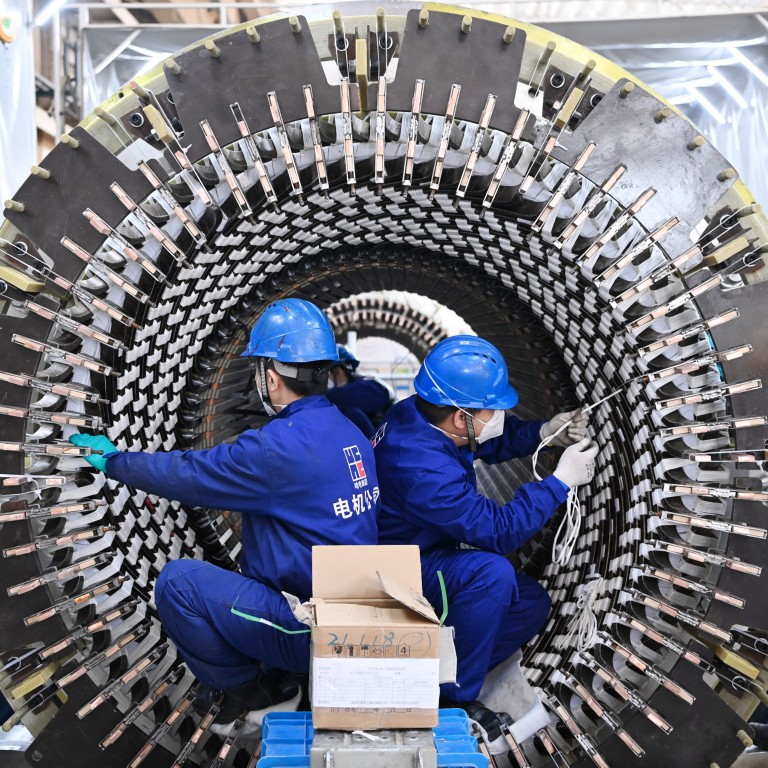
China’s economy seems to have peaked for the year. Is a rapid slowdown on the cards?
- Major industrial activity indicators in May were disappointing and consumption recovery seems to be fizzling out
- Bad news on the growth front is good news for the policy outlook, however, with monetary tightening likely to be gradual
As the first economy to emerge from the Covid-19 crisis, China seems to have moved beyond the initial snap-back phase. However, there are signs that the early momentum could be fading.
The recent weakness is mainly concentrated on the domestic demand side. Some major activity indicators in May, including industrial production, fixed-asset investment and retail sales, were all surprisingly disappointing.
Growth of both infrastructure and property investment softened last month, probably reflecting the impact of tighter policies on implicit local government debt and the property sector.
At the same time, China’s consumption recovery seems to be fizzling out. After a strong rebound in March, retail sales growth lost steam in April and May. In particular, the recovery in services consumption remained a laggard. For example, the annual average growth in catering sales was 1.4 per cent in May, notably below the pre-virus trend of over 9 per cent growth in 2019.
The figures tells us that China’s growth peak has certainly passed. However, the slowdown is likely to be modest for the rest of the year.
Given that China is very connected to the global trade cycle, it should continue to ride the export recovery amid firm external demand.
Many are worried that a potential shift in the consumer spending mix from goods to services, as major economies reopen, could weigh on demand for China’s goods exports.
However, we have seen little evidence of any negative impact since Covid-19-related restrictions in the United States and Europe were eased at the start of the year.
Even if American consumer spending on goods declines, there is room for goods consumption outside the US to increase, driven by income gains and the release of pent-up savings.
Goods imports should also find support from the robust global capital expenditure cycle, as investment tends to have more imported content than consumption.
‘Large shocks’ from US-China trade war cost value chains 3-5 years of growth
Another potential headwind for Chinese exports is the normalisation of China’s export share in the global market.
Helped by resilient supply chains, China’s share of the global export market had increased by about 1.2 percentage points at the end of 2020, compared with the end of 2019.
As the export capacity of other emerging market economies starts to normalise, with improvements in their domestic coronavirus situations, we could see a decline in China’s export market share. But this is unlikely to be a major drag on China’s export performance.

In addition, the strength in export performance is likely to spill over positively to the investment side.
China’s residential property market: will the bubble burst?
Service consumption is expected to remain weak in June as indicated by the soft tourism data during the Dragon Boat Festival this month.
However, after a sharp pickup in the pace of vaccinations, China is on track to fully vaccinate 40 per cent of its population by the end of June.
Significant progress towards herd immunity later this year should support further normalisation of household consumption, especially services.
Meanwhile, bad news on the growth front is good news for the policy outlook. Weaker growth data in April and May has further reduced the risk of more aggressive monetary policy tightening this year.
Rather, tightening is likely to remain gradual, mainly in the form of slower credit growth amid tighter control of implicit local government debt and shadow banking credit. The credit slowdown is likely to bottom out in the fourth quarter.
Meanwhile, the People’s Bank of China should keep an ample supply of interbank liquidity while leaving the policy rate unchanged to avoid adding further pressure on small and medium-sized enterprises, which were hit hard by the pandemic.
Sylvia Sheng is a global multi-asset strategist at JP Morgan Asset Management


